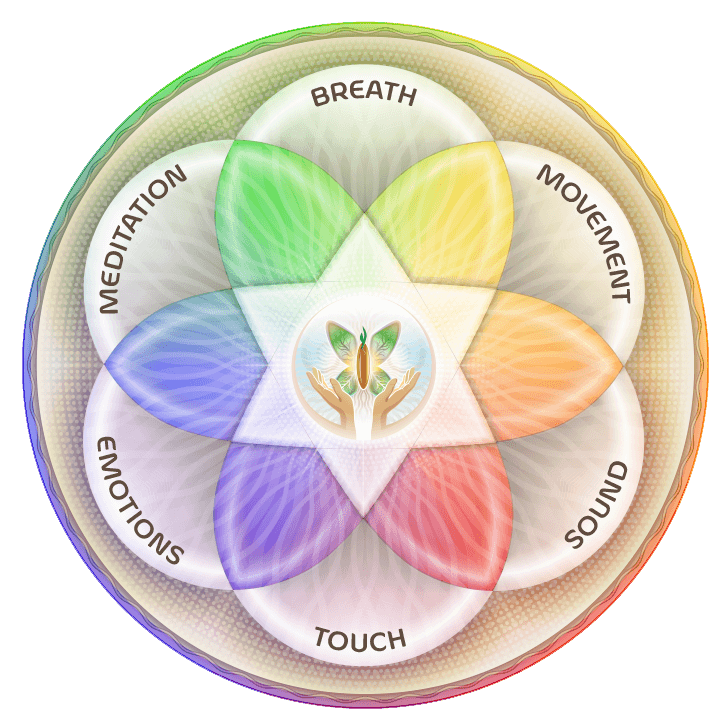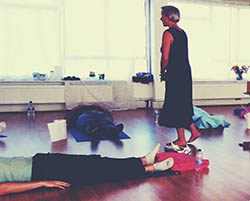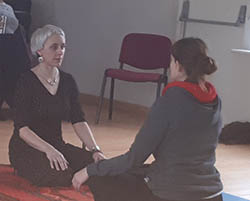About Me
What I Do
Biodynamic Breathwork & Trauma Release System Practitioner
Birth Doula
Biodynamic Breathwork Trauma Release System

The human body is perfectly structured with genuine wisdom and properties of self-healing and protection. Breathing is necessary to keep the body alive and functioning. Unfortunately, what most of us don’t realise is that our breathing becomes restricted and therefore, our breathing becomes very shallow and it does not supply the organism with the sufficient amount of oxygen. This shallow breathing becomes a habit and leads to malfunctioning of the body and mind.
BioDynamic Breathwork & Trauma Release System was created by Giten Tonkov, and it is a therapeutic approach that uses breath as the primary tool with the help of supporting elements such as movement, touch, sound, conscious emotional expression and meditation to support trauma release and healing on the somatic level. BioDynamic Breathwork heals trauma by releasing core tension and supporting clients to complete arrested trauma-related Fight/Flight or Dissociated responses.

Biodynamic Breath and Trauma Release techniques allow us to reach to those parts of the body where the post–traumatic tension is held, and help release it. It is a powerful method of therapy and work with the body which integrates deep connected breathing and conscious body movement. This stimulates the flow of energy and releases old traumas that are trapped within your system.
What are the benefits of BBTRS
IT Reduces
problems with the digestive system | chronic fatigue | Stress
Difficulty focusing | breathing difficulties Trauma | Insomnia
Apnea | ANXIETY | Depression
physical and emotional pain
obsessive compulsive disorder
it supports
Emotional integration
Aliveness
Relaxation
BODY AWARENESS
Meditation
Inner balance
Physical alignment
it STRENGTHENS
Connection with others
Health & well-being
Empathy
Self-awareness
Creativity
Mental clarity
Spiritual connection
“Trauma is not what happens to you. Trauma is what happens inside you as a result of what happens to you.”
Dr Gabor Mate
Emotional trauma can cause life-long changes that may lead to physical and mental conditions, ranging from anxiety, insomnia, chronic fatigue, aches and pains, anger, mood swings to post-traumatic stress disorder and physical illness. Trauma induces separation from the self, and as a result, you become more rigid in responses to life, to relationships and to yourself.
BioDynamic Breath and Trauma Release method uses a special breathing technique to stimulate the sympathetic nervous system which allows activation of belts of tension, related to unexpressed emotions or unprocessed traumas, which then lead to breaking through the body armouring and releasing mental, emotional and physical blockages. The main components in this approach are deep connected breathing, movement, conscious touch and bodywork, sound, meditation and conscious emotional release.




Emotions and feelings can come to the surface once we are breathing and connecting to ourselves and when the physical tension in the body starts to unlock. It creates an opportunity to acknowledge and express feelings that have been repressed for a long period of time, which gives people a big sense of relief, and it creates more space in the physical body for feelings like sadness, joy, anger, grief, etc to flow freely, so the person is not overwhelmed or overtaken by it. Deep connected breathing through the whole body allows to build up an energetic charge in the body, activate muscular tension and then release it, and to release emotional patterns.
Movement, in its spontaneous form and in specific exercises, allows the body to vibrate and release withheld energy from the core and body’s tissue.
Conscious touch and bodywork is used at many levels and it supports the energy to find its way and to flow freely and to unwind from restricted parts of the body. It also brings comfort and a reassuring sense of safety.
Sound is a powerful tool and it brings numerous benefits throughout the breath session. Using recordings or even live instrumentals is a great source of support and resource, as well as being helpful with getting in touch with the emotions and feelings.
Where trauma comes from?
Excerpted from Feel to Heal: Releasing Trauma Through Body Awareness and Breathwork Practice
By Giten Tonkov ©2019
Trauma is what happens when our systems become overwhelmed, whether by a specific event or life circumstances. If we cannot adequately process and “clear” these experiences—consider the effects of long-term abuse, an attack, sexual violence, or wartime—then our lives can become unmanageable. Importantly, we can trigger the body’s natural “emergency” responses even when we’re not being chased by a tiger or threatened at gunpoint. Depending on about a million factors, or possibly more, any given person can experience trauma because of a perfect storm of events. If the exactly wrong thing happens at a moment when we are physically, emotionally, mentally, and/or spiritually exhausted, afraid, confused, or otherwise unable to cope, then trauma can result.
STRESS VS. TRAUMA
The terms for how we feel, by definition, are subjective. One person’s idea of a headache might be different from someone else’s—and words like “stress” can have limitless shades of meaning. Stress can be an invisible, moving target. It is often the result of thoughts and beliefs, both conscious and unconscious—especially those rooted in fear. We feel fear about what we are able or unable to do, about the manageability of our lives, about money and love and relationships, and about what is happening in the wider world. Our thoughts fuel this fear, and all manner of negative manifestations can result.
Stress can also be present from past events. Mental memories and “sense memories” can be buried deep within us, acknowledged or not, often for long periods of time. They can become unexpectedly triggered by an event, or they can cause illness or disease.
Trauma, on the other hand, goes beyond stress. Unlike stress, which often can be successfully managed by lifestyle changes and various forms of psychotherapy, trauma is the result of our system’s overload. Trauma happens when we can’t cope with an event, a set of circumstances, relationship dynamics, or even ongoing stress. Generally, we can’t “talk ourselves out” of trauma, because our body has taken over. Trauma results when our systems read a situation and see a threat.
WHY WE REACT
What happens in our bodies in response to traumatic events and circumstances is hard-wired. Our bodies flood with hormones and our blood flow changes, all within as little as one-twentieth of a second—shorter than the time between two heartbeats, and long before our conscious mind has processed the threat. In that split-second of deliberation, our bodies automatically calculate how best to utilize the extra energy that could very likely save our lives.
When this happens, automatic processes take over—changes in our blood supply, brain impulses, hormone secretions, and organs ready us to fight, or to flee. That’s where the term “fight or flight” came from. However, another viable option is to freeze. In some animals, the freeze response is part of the fight-or-flight preparation; the brain is ready for any action, but remaining still appears to provide the best chance for survival. “Playing dead” or fainting can be useful in the wild, because some predators are not interested in killing an animal unless it is running or fighting back.
All of this biology goes to show that how we respond to stimuli in our environment is part of how we’re made—and so is letting go of stress. The foundational body-based trauma release—one of the six elements of BBTRS—comes from watching animals in the wild. The entire process is described in detail in Feel to Heal: Releasing Trauma Through Body Awareness and Breathwork Practice.”
source: https://www.biodynamicbreath.com/breathwork-bbtrs-system/where-trauma-comes-from/
Join me
Newsletter
Follow
Subscribe
